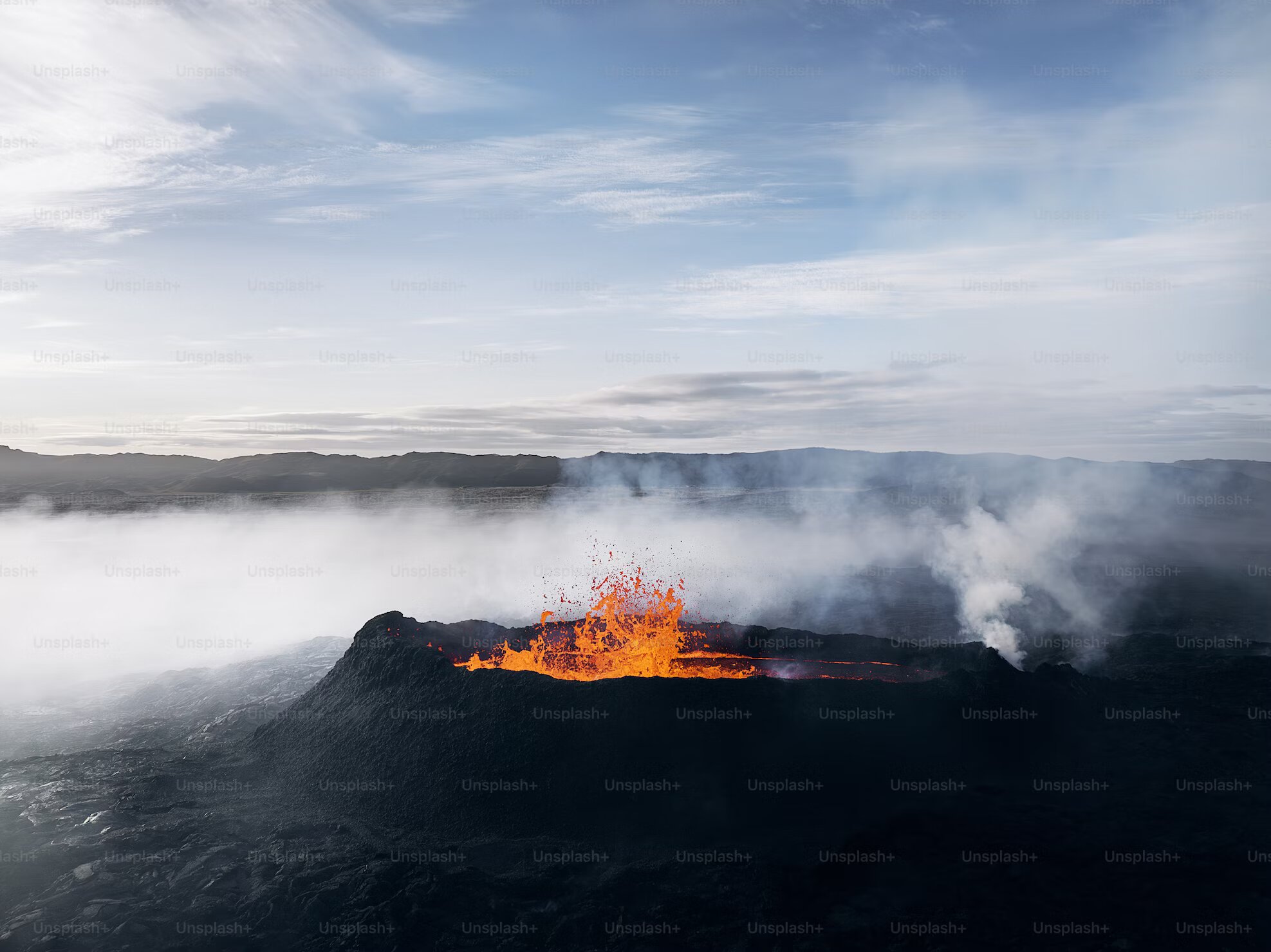More than just mountains, volcanoes are enormous geological structures. These act as the Earth’s pressure valves, allowing energy to escape from its blazing center. Volcanoes provide as a stunning, mesmerizing, and occasionally lethal reminder of the dynamic forces that form our globe. Let us explore their magnificence, strength, and hidden mysteries.

What Is a Volcano?
Volcanoes are not randomly scattered; they emerge where tectonic plates meet—the plate boundaries. About 75% of the Earth’s active volcanoes reside in the Ring of Fire, a 40,000-kilometer (25,000-mile) chain encircling the Pacific Ocean. This fiery necklace hosts explosive eruptions, earthquakes, and seismically active sites. It’s where the Earth’s inner fury meets its outer skin.
How Volcanoes Form
1. Island Arc Volcanoes
Consider a subduction zone, which is the location of the descent of one tectonic plate beneath another. The melting point of the mantle is lowered here when water from the subducting plate rises into the mantle wedge.
The outcome? Molten rock, or magma, develops, rises, and seeps into the crust. Volcanic islands form chains when island arc volcanoes erupt. Consider Alaska’s Aleutian Islands or Japan.
2. Hot Spots
At mid-ocean ridges, tectonic plates pull apart. Magma wells up from the mantle, creating a new crust.
The Mid-Atlantic Ridge exemplifies this process. As magma cools, it solidifies, forming underwater volcanic mountains. These hidden marvels shape our ocean floors.

Types of Volcanoes
Volcanoes with cinder cones: These tiny, sharp-sided cones erupt with great force, releasing boulders, lava, and ash. Their pyrotechnic outbursts sculpt new terrain.
Shield Volcanoes: Low-viscosity lava flows give rise to these wide, mild volcanoes. Mauna Loa in Hawaii is a good illustration.
Known also as stratovolcanoes, composite volcanoes are imposing summits that oscillate between peaceful lava flows and violent eruptions. This describes Japan’s Mount Fuji.
Calderas: Massive craters created by powerful eruptions. The geysers in Yellowstone National Park are perched on a caldera.
Lava Domes: Slow lava extrusion is the cause of these bulbous landforms. Their spooky sculptures dot landscapes.
Submarine cinder cones: Seafloor topography is shaped by these underwater volcanoes, which are hidden beneath the ocean’s surface.
Volcanoes and Our World
By releasing sulfurous gases into the upper atmosphere, volcanic eruptions have the power to change the Earth’s climate. When these gases interact with water vapor, sulfuric acid droplets are produced that momentarily chill the earth.
One in every twenty people on Earth, or around 350 million people, reside in the “danger range” of an active volcano. We must be cautious and show respect for these flaming titans.
Conclusion: Pedaling into the Unknown
The geologic builders of Earth, volcanoes shape continents, climates, and cultures. They serve as a reminder that under our feet is a molten heart, full of rage just itching to burst. Thus, let us investigate their might, be in awe of their grandeur, and respect the precarious equilibrium between creation and destruction.







+ There are no comments
Add yours